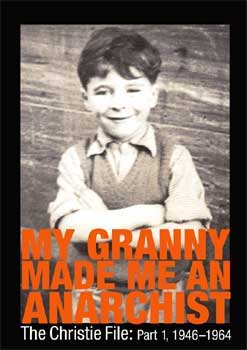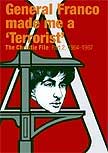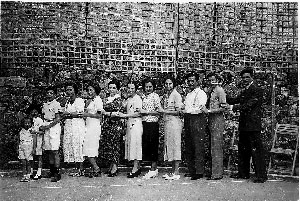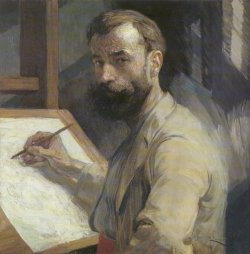“Artion” of Defiance
Guo danian
Tien An Mien, ChinaCommunist Party.- ChinaChina : history of anarchismBeuys once declared that the ultimate goal of art is to set us free; that art is the science of freedom. Since the early 80s, “performance art,” or, what I’ve created a new word for behavioral action in the guise of art – “artion,” started to mushroom in the heart of China, Beijing.
Since then, over two decades of performance art bore symbolic as well as substantial revolt to the normality of China’s art scene and social reality. Many artists got into trouble because of their bold stance of defiance carried in their creation. Their body of work is a collective documentation of the face of humanity slowly emerging from an autocratic regime that is so intolerant of dissidence.
Here is a recording of an artion put up by the author and Xi xin, a performing artist living in Guangzhou on the 4th of June 2003. After 14 years, the June 4th massacre that took place in Tiananmen Square in 1989 is still a taboo for the public in China. No commemoration for the dead is allowed, no relative discussion in public could be held. It is a blank page in the window of its history.
June 3rd, 2003. The train rattled north along Dongguan towards Guangzhou. I carried with me a psychic complex difficult to dispel. I thought of the kiddies I used to play with; my students at the ROA (Rights of Abode) University; my gang at the SMRC (Social Movement Resource Centre); my family and my loved ones. I believe that we are all precious and important, but I also believe that collective visions and struggle will not be disrupted by the absence of one. For this Artion, I am prepared for anything that is going to happen.
Last month, emails from Beijing still alleged my being on a “blacklist.” Despite such uncertified rumor, I would rather perceive China in a more positive way. Six months ago, I had the first encounter with Chinese Gong-an (Security Officers; police); the whole experience of getting a friend under arrest out of detention by means of “legal” persuasion, gave me the reflections that China (including its various level of bureaucracies) is striding ahead out of the dark ages of tyranny.
However, horror stories still headline newspapers. Just last month, a young man from outer provinces was beaten to death during custody in a Guangzhou police station. The case shocked and alarmed the central government and eventually led to the collapse of an abusive legislation on regional identity papers. Another case involved that of a performing art piece by a young Beijing artist, during the period of the CCP’s (Chinese Communist Party) National Party Congress. He staged a satirical piece of work, which involved nudity, declaring that “The People has the right to decide their own governance.” When it was enacted in Shanghai, there has been no problem from the police. But the artist was arrested when the piece was rendered in Guangzhou. A photographer documenting the work was also arrested. Both had their tough times during custody, leaving serious mental scars to the later.
“To this day, we still have no confidence to say where, when, and to do what, is safe.” Xi xian, the performing artist with whom I co-act for this piece of Artion confided.
On such a date, to act, is already the manifestation of defiance.
An almost clandestine pact has been made. Performing art pieces commemorating the sacrificed of the June 4th massacre will be enacted in the afternoon on the day concurrently in Beijing and Guangzhou.
How would the authority interpret these artists and their work is completely open. That is also where the danger lies. Most often it depends on the actual situational dynamics of conflict in public between the artists and the authority. For the original plan in Guangzhou, there were quite a number of enthusiasts tempting to take part during the early stage, but most of them resolved to take the role of spectator after personal considerations. Eventually there left Xi xin and me from Hong Kong for the act.
4th of June, early afternoon; we discussed the flow of the artion at the home of Xi xin. I made a call to Hong Kong before we headed out to buy the materials for the piece that include Chinese rice wine that pertains a flammable alcohol percentage, flowers for the dead, 128 photocopies of the Chinese character of Tian (heaven) and Wun (Quest), and tinfoil paper for wrapping the flowers for burning.
Besides identity papers, we left all sensitive personal belongings (telephone books, note books with plans etc.) at home. But Xi xin did not realized that I also carried with me a small pocket-red-book of the constitution of the Chinese Communist Party. Its clause 34 stipulates that: “All party members must rightfully exercise the power entrusted them by the people; conscientiously accept the criticism and monitoring of the people against bureaucracy and malpractices of dishonesty….”
I prepared to share readings with Gong-ans if the worst would come to happen.
Six p.m., we arrived at the Ersha Island, where the Guangzhou Museum of Fine Arts situates. At the back of the Museum runs the Zhu Jiang River, which goes out to the South China Sea. This piece of work has a metaphoric implication of questing for the humanity of the vast land, skyward to heaven; and outward bound to the ocean that connects to the world “outside.” A very Chinese culture of hope in its spiritual sense.
People who had been informed of the Artion appeared gradually.
We commenced.


He splashed the buckets of water onto the pavement along the walkway.

Then, he started to paste the 128 (sixty four copies of each character) pieces of A4 paper onto the wetted ground, forming character arrays in squares of 8x8 blocks, facing the river.

The floor lay out was very much a Taoist ritual in reality performance.

A few spectators joined in with the setting of character arrays.
A woman walking her dog passed in puzzle, asked: “What’s this all about?”
I said, “This is an Artion piece of..”
Xi Xin affirmed, “To-day is the 14th anniversary of the June 4th massacre.”
Her black dog started to bark aloud, seemingly wailing torture and grief.
A half naked man with hair dyed in gold, resembling big brothers in gangster movies, sat on a bench along the walkway, watched with a stone sad face.

When the last piece of character, the 128th was laid onto the ground, my voice broke up the dead air with an old song of mine, “Shengdaran.” It is a vocal solo piece in traditional Chinese ancient melodies, criticizing the history of autocracy and its linage through to the Chinese Communist Party. Classical in its form while contemporary in its issue.

I circled around the character arrays in slow strides, wailing the lines with the full capacity of my lung. Each line of the verses darted like sound bites into the river. The song and its volume struck the crowd gathered. An uneasy tension brewing among them. People started to scout around. Yet the completion of the piece of work is foremost and utmost. We carried on.
Xi xin wrapped the flowers with the tinfoil paper into a cone. He first drank from the bottle of rice wine, and then poured the rest soaking the flowers wet through. He took out a lighter. Fire was set alight to the flower bunch. My vocal accompanied the cementation of the flowers to its finale. “For the dead,” uttered Xi xin.

No one would understand how important this moment is to me. On this date, on Chinese soil, that I am singing this song within such context of this piece, with resolution; its personal significance is overwhelming.
In the murky riverside lights, fire from the wine, song from the soul, when it came to its end, the tears had already traveled to the depth of the heart. It has been 14 years!
The fire died out. We started to collect the papers all soaked wet in heaven’s tears and started to thrown them into the river. For the Chinese, a certain kind of raw paper is used to call to the souls of the dead, by throwing them into the sea. Our act carried a similar metaphor of despair. The Xeroxed papers flied onto the surface of the river, some showing the characters skyward, some facing down, forming a figurative long line of quest for the lost souls, sailing by the currents out to the sea. Watching the 128 pieces of paper disappearing into the end of the Zhu Jiang River, the piece of work is finally finished. People started to disperse. It lasted 30 minutes. Not a single Gong-an appeared.
The gang moved to a roadside stall not too far from the river for drinks. Among the 14 people who joined us, -many of them students from the Guangzhou academy of fine arts, only one dared to join the discussion on what happened on June 4th 14 years ago. This is Guangzhou after all. Xi xin retold many stories from the Tiananmen Square, almost in tears. The rest listened in silence.
The long march to democracy in China is marathonic. Li Zheng Tian, who was one of the three authors of the famed Li-Yi-Zhe Big Characters Poster in the late 70s, is still alive and living in the Guangzhu Academy of Fine Arts, enlightening young people to the discovery of arts and humanism. He founded the Chinese Humanist Association in recent years and holds fort to its development into the future. His former buddy Wang Xi Zhe courted with the Kuomintang in Taiwan. And new generation activists a decade younger, coming out of Tiananmen Square in 1989, like Wang Dan, is studying diligently overseas to prepare for their possible part in the future in building a new China. There are failures as well as there are road-runners.
But as we all understood it, all happenings and actions have to be local. Overseas supports are always complimentary, and external. Without local and internal vitality, all struggles are fragile to sustainability with the passage of time.
As such, I have made a decision I could not refuse myself. On June 4th 2003, 50 thousand people gathered in the Victoria Park in Hong Kong to commemorate the tragedy, but one single soul from this city went to Guangzhou for an Artion. It is, to us all fanning the ecology of freedom, an Artion of defiance; hopefully, a match for a fire.@
